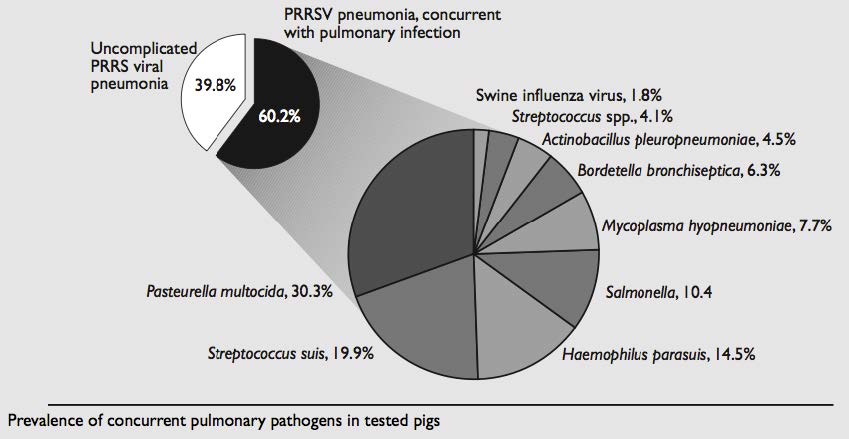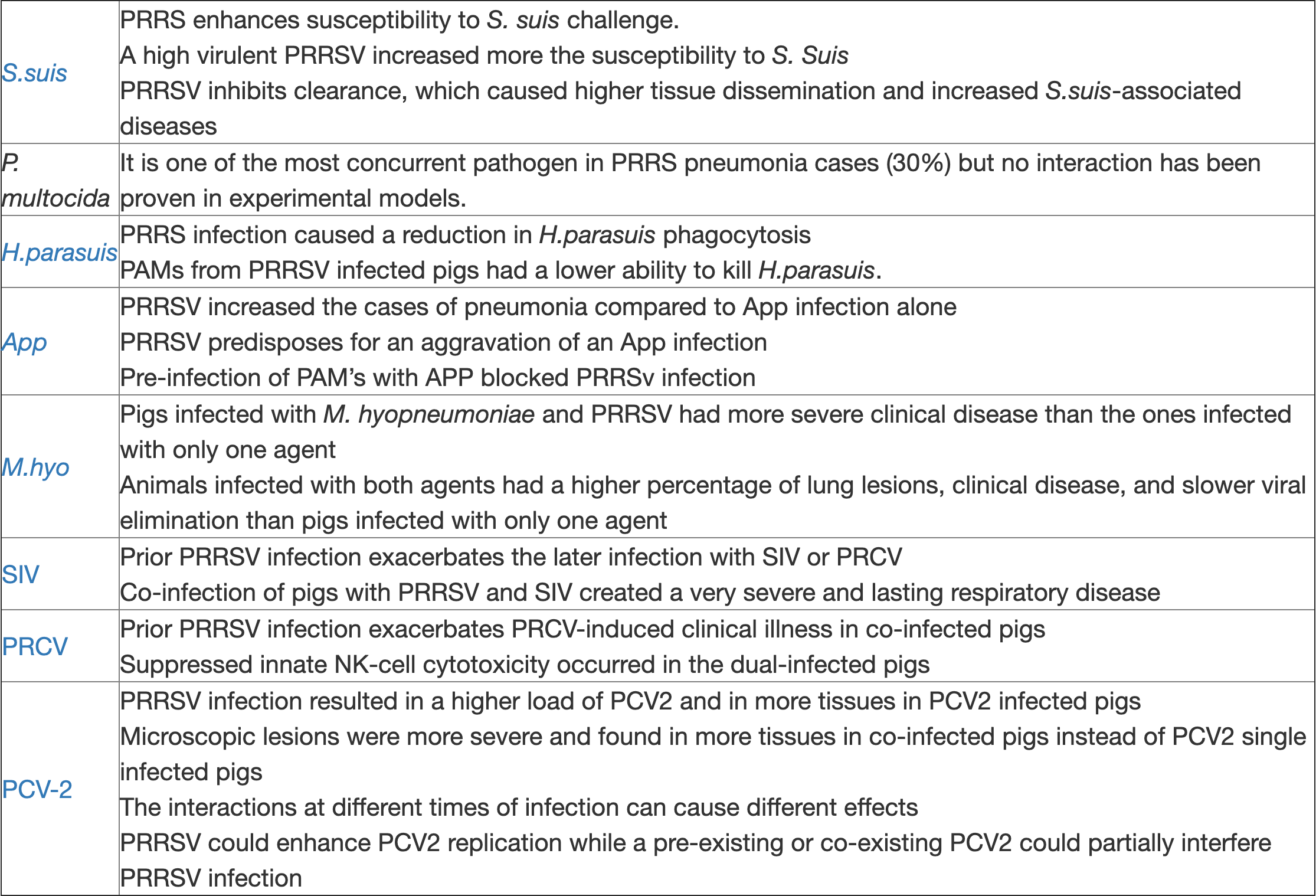PRRSv has a wide variety of effects on infected animals and populations depending on the virulence of the PRRSv strain, the age and susceptibility of the animals affected, the environment and management practices (vaccines, biosecurity measures, etc. in which they are living.
Another very important factor when facing a PRRSv infection is the interaction of the virus with other agents present in the farm. Here we review the studied interaction between PRRSv and some of the most frequent pathogens found in our farm.
Is PRRSv frequently detected in combination with other pathogens?
The concurrent presence of PRRSv with one or more viral or bacterial agents was detected already in early outbreaks of the disease. From 1992 to 1994 Zeman (1996) studied 221 different PRRS clinical cases. The author reported concurrent pulmonary infections, predominantly bacterial, in 60.2% of the PRRS pneumonia cases. The 3 most present agents interacting with PRRSv were: P. multocida (30%), S.suis (20%), and H.parasuis (14%). Those concurrent pulmonary infections explain why both interstitial pneumonia and bronchopneumonia lesions are so commonly detected.
Figure 1: Percentage of different concurrent agents isolated in PRRS pneumonia

In a more recent study in 147 farms, Velasova (2012) found that 53.3% of PRRSV positive farms were also positive for SIV H1N2 (compared to 40% in PRRS negative farms); this was also observed for SIV H1N (31,1% vs 12,9%), APP (84.8% vs 65,9%). The only exception was PCV2 that was equally found in PRRS positive and negative farms (89.1% vs 89,4%).
In France, Fablet et al (2012) studied and sampled pigs from125 farms. They found an association between the percentage of pigs with antibodies against PRRSV and the prevalence of M. hyopneumoniae, the percentage of pigs with antibodies against SIV (H1N1 and H1N2) and A. pleuropneumoniae (at 22 weeks).
What is the effect of co-infections of PRRSv and other pathogens?
The previous studies show that there is a clear correlation between the presence of PRRS and the presence of other pathogens in the farms but the effects of the different coinfections are not all the same. In fact, these interactions are not easy to prove and to describe. For this reason several groups have attempted to develop models to study PRRS virus co-infections with various bacteria and viruses.
The following table summarises the results of some of the studies that have been developed in order to explain how does PRRSv interact with different pathogens commonly found in swine farms.
Table 1: Summary of the main interactions found between PRRS and other virus or bacterial swine pathogens

Table links: S.suis, H.parasuis, App, M.hyo, SIV, PRCV, PCV-2
In most of the cases, PRRS acts as an enhancing factor for other concurrent agents, predisposing the pigs to suffer other infections, exacerbating the clinical disease and lesions and prolonging the pneumonia caused by the secondary pathogen. However M.hyo has also been found as a predisposing factor for PRRS infections and in two cases, PRRSv infection were negatively interfered by a previous infection either by APP or PCV-2.
The presence of PRRS together with other concurrent viral and bacteria increases the severity and duration of the respiratory disease. These co-infections, alongside with other factors like environment, management, and animal susceptibility account for a significant share of the differences observed from farm to farm in losses caused by PRRS.